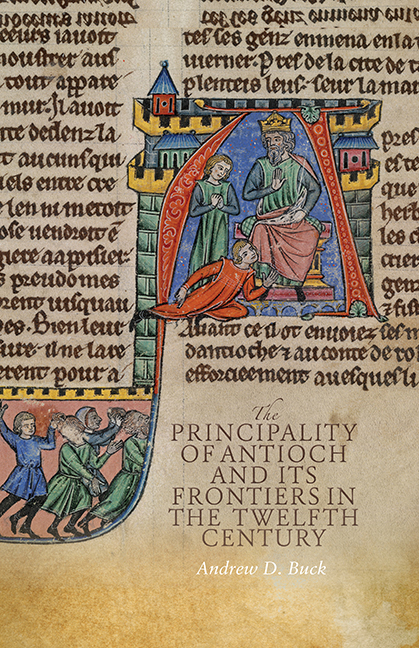Book contents
- Frontmatter
- Contents
- List of Maps
- Acknowledgements
- Abbreviations
- Introduction
- 1 The Extent of the Principality
- 2 The Rulers of Antioch
- 3 Central Governance and Military Service
- 4 Lordship in the Principality
- 5 A Frontier Society? The Nature of Intercultural Relations
- 6 Relations with Byzantium
- 7 Antioch and the Latin East
- Conclusion
- Bibliography
- Index
1 - The Extent of the Principality
Published online by Cambridge University Press: 09 May 2017
- Frontmatter
- Contents
- List of Maps
- Acknowledgements
- Abbreviations
- Introduction
- 1 The Extent of the Principality
- 2 The Rulers of Antioch
- 3 Central Governance and Military Service
- 4 Lordship in the Principality
- 5 A Frontier Society? The Nature of Intercultural Relations
- 6 Relations with Byzantium
- 7 Antioch and the Latin East
- Conclusion
- Bibliography
- Index
Summary
The twelfth century was a period of profound territorial change for the principality of Antioch. From its very inception, the principality had emerged within a complicated patchwork of Islamic mini-states – classified by Michael Köhler as a system of ‘Syrian autonomous lordships’ – subject to external interests and influences. According to Köhler, this engendered a ‘no place doctrine’, in which northern Syria's Muslim elites opposed the hegemony of outside forces in favour of preserving their own independence. The opening decades of Frankish control saw the principality largely able to slot into this framework, and through martial dominance and crafty politicking, particularly under the energetic leadership of Tancred of Hauteville, the Antiochenes were able to assert control over much of Cilicia and northern Syria. Most importantly, this was done not only by opposing Byzantine interference, but also by isolating Antioch's nearest military threat and greatest rival for power in the region, the city state of Aleppo, to such a degree that it was forced to pay financial tribute to the Franks. The principality's fortunes still waxed and waned in response to military and political changes, and defeats against Muslim forces at Harran in 1104 and Ager Sanguinis in 1119 were followed by significant land losses. Nevertheless, by 1130 Antioch had reached its greatest territorial extent. In the decades which followed, however, successive disasters reduced the principality to little more than the capital city and its immediate environs, but the Franks endured. To survive such fluctuations as the Antiochenes did was almost entirely unknown elsewhere in the medieval world, especially in the Latin East, as although Jerusalem and Tripoli experienced territorial changes, before 1187 these were far less profound than in the principality. Meanwhile, Edessa's fall in 1144 quickly heralded the county's total demise. As will become evident throughout this study, such territorial changes prompted the creation of a fluid and responsive state, one whose existence sparked the attention of various nearby powers and was predicated on an ability to manage these interventions.
- Type
- Chapter
- Information
- Publisher: Boydell & BrewerPrint publication year: 2017



